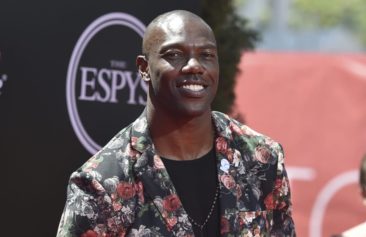Doctors say Junior Seau’s brain was plagued by chronic damage that has been found in dozens of deceased former football players.
Five independent brain specialists selected by the National Institutes of Health came to these discoveries on Seau, a Hall of Fame linebacker who killed himself last May with a gunshot to the heart.
Gina and Tyler Seau, Seau’s wife and son, respectively, said on ESPN and ABC News that Seau’s brain had tested positive for chronic traumatic encephalopathy (CTE), a neurodegenerative disease that can lead to dementia, memory loss and depression.
“I think it’s important for everyone to know that Junior did indeed suffer from CTE,” Gina Seau said. “It’s important that we take steps to help these players. We certainly don’t want to see anything like this happen again to any of our athletes.”
She said the family was told that Seau’s disease resulted from “a lot of head-to-head collisions over the course of 20 years of playing in the NFL. And that it gradually, you know, developed the deterioration of his brain and his ability to think logically.”
CTE is a progressive disease associated with repeated head trauma, something many football players experience. It was associated primarily in boxers, but not discovered in football players until 2005. Researchers at Boston University recently confirmed 50 cases of CTE in deceased former football players, including 33 who played in the NFL
Researchers contacted the family mere hours after his death, Tyler Seau said, seeking to secure his father’s brain for study. The family ultimately chose the National Institutes of Health in Washington, D.C., to oversee the research because it was a “complete, comprehensive, unbiased scientific institution of the highest level,” Gina Seau said.
The NFL in a statement said the NIH’s “finding underscores the recognized need for additional research to accelerate a fuller understanding of CTE.
“The NFL, both directly and in partnership with the NIH, Centers for Disease Control and other leading organizations, is committed to supporting a wide range of independent medical and scientific research that will both address CTE and promote the long-term health and safety of athletes at all levels. The NFL clubs have already committed a $30 million research grant to the NIH, and we look forward to making decisions soon with the NFL Players Association on the investment of $100 million for medical research that is committed in the Collective Bargaining Agreement. We have work to do, and we’re doing it,” the NFL said.
Dr. Russell Lonser, the former chief of surgical neurology at the NIH, helped coordinate the study. In an interview, Lonser, who was recently named chairman of the department of neurological surgery at Ohio State University, said that because of the publicity surrounding the case, the study of Seau’s brain was “blinded” to ensure its independence.
Three independent neuropathologists from outside the NIH were given unidentified tissue from three different brains; one belonged to Seau, another to a person who had suffered from Alzheimer’s disease, and a third from a person with no history of traumatic brain injury or neurodegenerative disease.

